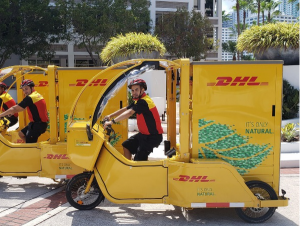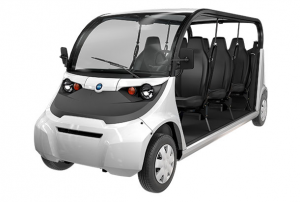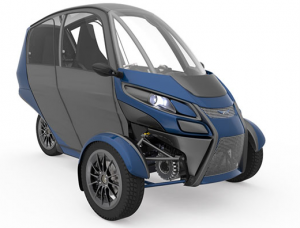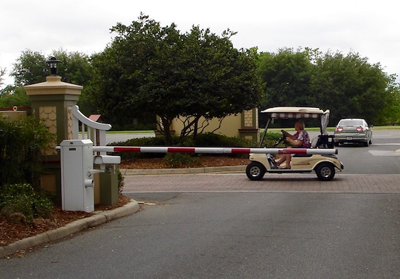Year-End Thoughts and a Look-Ahead for 2021
It has been a rough year by any measure, and the COVID thing isn’t over yet. Vaccines are on the way to your local health care facility, so there is hope and promise in that regard. No doubt we in the gated communities across the country suffered losses, either within the community or without.
It would be interesting to know the statistics concerning infection rate, loss of life, hospitalizations, etc. for gated communities—and how that compared with similar age demographics outside the gates. In theory at least, it should be easier to control the spread of disease within communities that are relatively self-contained, and which have limited ingress and egress.
Be that as it may, it is clear that the pandemic crisis will have lasting effects in where we live and how work. It is likely that a dispersed living lifestyle will increasingly characterize demographic trends over the next year and beyond. Factors influencing this trend include the decline of mass transit commuters systems from suburbs to urban centers, as a necessary health measure. This avoids clustering on transit systems, as well as depopulating urban centers for the same reasons.
Work environments will become increasingly a virtual experience, both for office, assembly lines, maintenance, and warehousing. Many of these factors were well on the way even before COVID-19. With the pandemic even more emphasis and urgency will be placed on in-person to virtual conversions. These factors and trends will also how we get from point A to point B. To address this issue, I present two categories of mobility trends: a) Product types and infrastructure and b) what I see as the most needed (and immediate) product developments, as concerns PTVs.
Product types and infrastructure
Here is the list of priorities:
- Interconnectivity for fleets and consumer PTVs—The trend toward growth interconnectivity in fleet operations has been on the table for some time. In the realm of golf, obviously, it has been the control of golf car fleets, both while on the course and in the maintenance shed. The ability to track individual golf cars while in use has ensured safety and given parameters for location of operation. In the days of COVID fleet control also can be used to assure health protocols.
For vehicles not in use, that is in the vehicle shed or terminals, interconnectivity assures timely maintenance and parts replacement when needed, and other service-related operation.
Beyond golf and for PTV use in gated communities, interconnectivity can have a host of benefits, to include access to shopping locations, public services, such as libraries, schools, and entertainment, as well as public charging locations.

- Last mile delivery systems–operating with small three- and four-wheel vehicles displacing the conventional UPS and FedEx trucks. This, in turn, implies that gated communities will be building drop-off warehouses as a conduit to off-loading from large trucks to the small vehicle fleet.
- Emergence of three-wheelers—Three-wheelers, such as the Arcimoto FUV, are likely to become a competitive alternative to the standard PTV. Currently, this type of vehicle is classified as a motorcycle and therefore has access to public roads regardless of the speed limit. Thus, they have an edge in versatility over the PTV, i.e., those certified as a low-speed vehicle.
- E-scooters, e-bikes, and e-skate boards–In areas both in and close to cities these types of vehicles already proliferate and enhance the options to public transportation. Will we see them in gated communities? Maybe not in the 55+ encampments, but in the all-ages community, very likely.
- Driverless vehicles and transportation systems—Driverless transportation systems in the form of shuttles already operate in campus-type environments and should find a place in gated communities. Aside from convenience, small-framed shuttles, such as those produced by GEM, are easier to clean and sanitize, as compared with mass transit conveyances such as trains and buses. And, of course, they do not cluster as many people together as the latter.

Polaris GEM autonomous shuttle vehicle
As to driverless PTVs, individually owned, the gated community is the ideal location for the market to begin. These could be an option to driverless shuttles and a boon to the physically handicapped.
The benefit over shuttles is that timing and destinations can be programmed to suit individual needs, where as shuttles, in all likelihood will be on a schedule with pre-determined stops.
- Collaborations between public transportation authorities and e-mobility manufacturers—Already we see a growing number of such collaborations in the e-bike-e-scooter space—and also in pilot programs for last-mile delivery systems. These collaborations are very likely to grow in number across all sizes of urban and suburban areas, as public transportation executives integrate, diversify, and upgrade their systems—and as small vehicle manufacturers as attracted to the market.
- Growing number of mobility start-ups—Start-ups such as Arcimoto, AEV Technologies, and ElectraMecannica are already pushing the product envelop with new designs and are all listed on NASDAQ. These companies are manufacturing the new wave of radical design and environmentally-friendly vehicles that could well set small vehicle trends over the next three-to-five years. It’s problematic whether the golf-embedded traditional manufacturers of the current crop of PTVs will be part of this trend. One would hope so, and with their dealer networks in place, they certainly have a leg up on the newcomers—but it will take a change in strategic vision to keep pace.
Most needed product developments
Here is the list of priorities:
1, Better enclosure designs—Needs to include weather shielding, combined with good weather openness. Current enclosure designs, which we’ve had forever, look like upside down paper bags we used to put over our heads with eye-holes.

Pictured at left is the Arcimoto 3-wheeler, mentioned above. Note the sleek design and the full enclosure, a big plus. And, by the way, the door panels are removeable so can also enjoy an open cockpit, weather permitting.
This vehicle also features lithium batteries, has a range of 102 city miles, and a top speed of 75 m.p.h. (It’s classified as a motorcycle.)
Every time I see and research this vehicle, I am more impressed. It covers four of the five needed product developments listed here.
- Heating and cooling systems—Improvements in these systems complement to the needed new enclosures.
- The 100-mile range solution—We need to solve the range anxiety issue. Could be with lithium batteries, or maybe hydrogen (see my previous column in the December issue of Golf Car Options).
- Lithium battery penetration—All signs are that lithium batteries, despite the greater cost. Costs will have to come down, however, for a 100-mile battery pack. Lithium drop-in solutions, such as offered by RELiON, are sure-fire upgrade to your current PTV. A 48-volt battery replacement for your lead acid pack goes for just under $2,000. Batteries of this type need to be pushed by dealers.
- Crash-tested bodies—the way to greater versatility in use right now is to improve the crash test levels of PTVs. While a full crash test survival capability may not be possible, improvements may be possible to lift the current NHTSA miles per hour cap from 35 mph and under to 45 mph. It would definitely help to expand the market for PTVs, as well as making the vehicle safer at all speeds. Carbon-fiber bodies may be an answer.
Express your opinion
So, these are my look-aheads, both near- and long-term. What do you think? If you’d like to give me your opinion, send an e-mail to me, Stephen Metzger, at info@smallvehicleresource.com.
Contact the Author: Steve Metzger at smetzger@smallvehicleresource.com. Or check out our website at www.smallvehicleresource.com, where you will find an extensive database of vehicle models and can make side-by-side comparisons of vehicles based on a full set of specifications.


